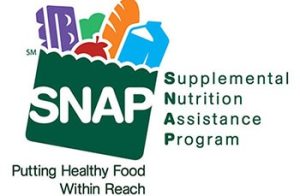COVID-19 continues to scramble industry expectations and consumer food buying behavior.
The COVID-19 pandemic continues to defy conventional wisdom and economic norms surrounding the U.S. food industry. Prior to the pandemic, most food industry analysts believed that escalating input costs typically leads to a squeeze in profitability for food manufacturers before offsetting price increases can eventually take effect. But the unique circumstances of the pandemic led to a different situation unfolding in 2021.
According to a new report from CoBank’s Knowledge Exchange, a perfect storm of increasing input costs in mid-2021 led to a series of pricing adjustments, some of which are just now hitting grocery shelves. Additionally, consumer food spending has not returned to pre-pandemic patterns, upending industry expectations. As a result, grocery demand remained robust, sales remained elevated, food companies were able to begin raising prices and profit margins, on average, showed little sign of compression.
“We believe that consumer food spending habits, which have become firmly entrenched after two years of the pandemic, will persist for a good while even if COVID fades into the background by mid-year,” said Rob Fox, director of CoBank’s Knowledge Exchange. “The combination of tailwinds from the pricing actions now taking full effect with the continuing strong consumer demand means retail food manufacturers will continue to enjoy strong profits in 2022.”
The hopeful outlook at the onset of 2021, when it appeared that the worst of the supply chain issues were coming to an end, quickly shifted by Q2. It became clear that the global droughts would take a toll on grain harvests, vaccinations would not be a panacea for labor shortages, trucking companies were being overwhelmed by inventory restocking efforts and energy supplies were not rebounding in line with the surging recovery in demand.
While commodity prices were rising last summer, the supply chain situation was rapidly deteriorating. The New York Fed’s Global Supply Chain Pressure Index, an index of ocean, truck and air freight rates, has risen over 400% from pre-pandemic levels amid a devastating shortage of trucks, trailers, drivers, and shipping containers. Cost inflation of some common manufacturing expense categories has jumped by double digits, with increases for diesel up 52%, trucking 41%, plastic resin 33%, and wages 14%.
When COVID did not fade away in 2021 as anticipated and grocery demand remained robust, food companies were able to adjust pricing, and profit margins generally remained intact. Since the initial COVID wave in March of 2020, total weekly grocery sales have averaged 15% higher than pre-pandemic levels.
The simple average of operating profit margins from 66 publicly traded food manufacturers and processors shows that profit margins remained strong and even widened in calendar Q3 of 2021. Recent earnings guidance from food manufacturers suggests strong profit margins will persist when Q4 results are unveiled in the coming weeks. In fact, strong unit sales on top of pricing actions likely drove many food companies to record incomes in 2021.
USDA is projecting a return to more “normal” farm commodity inflation rates of 2-4% in 2022, which in the case of meat, poultry, and eggs would represent a major slowdown in cost escalation. However, it is noteworthy that USDA is not projecting a general decline in any prices in any segment other than fruits. At the grocery store, prices will continue to escalate as previously announced re-pricings kick in.






